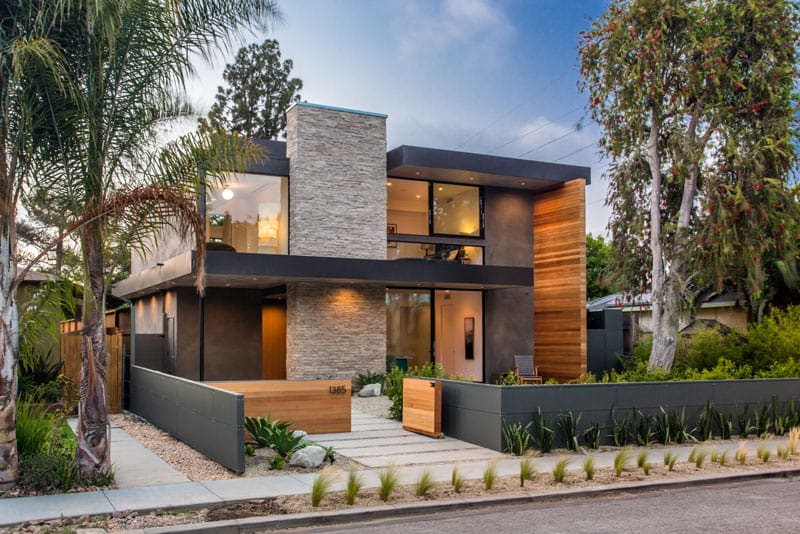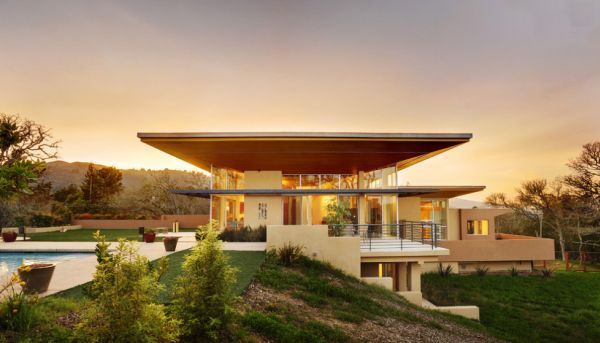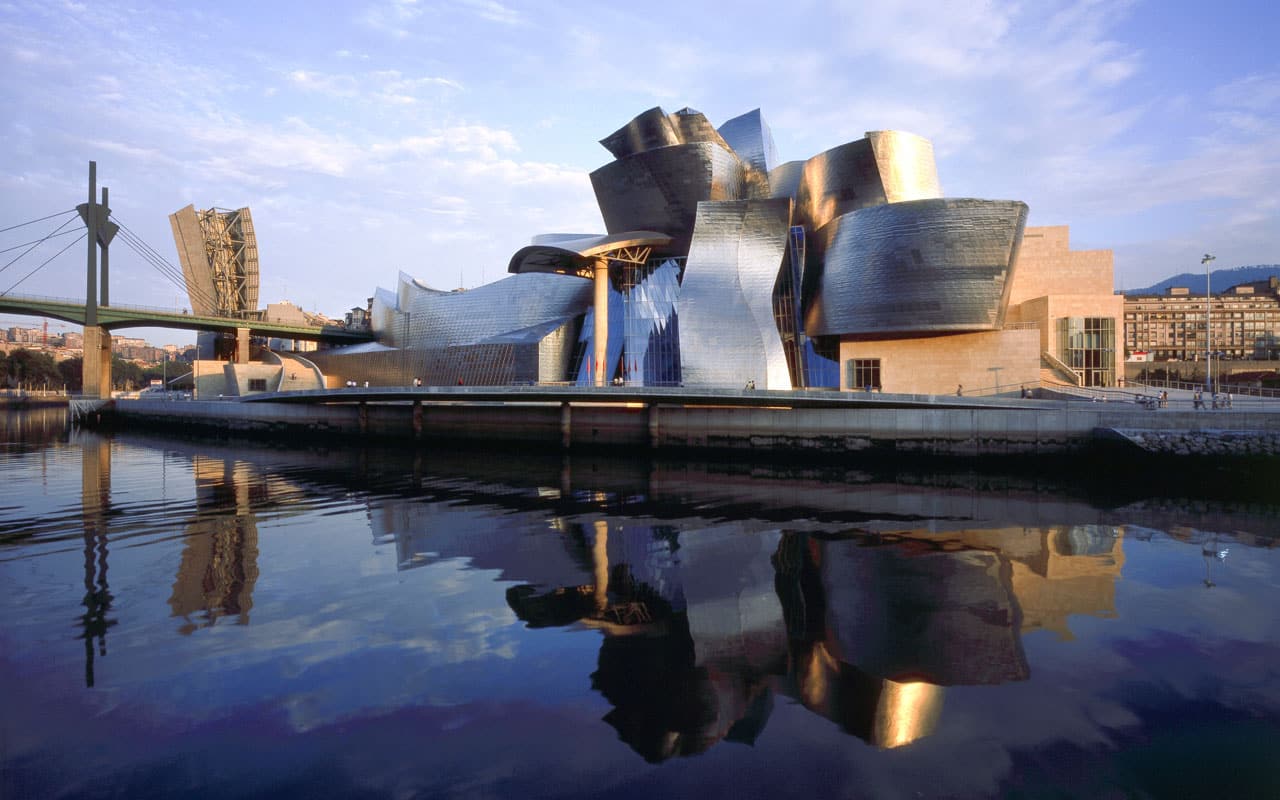As the title suggests, it is the present-day architectural style. The most innovative works that exist in contemporary architecture are art museums and public buildings. One of the important elements of contemporary architecture is the expressiveness of form and design. This form of architecture is dominant across the world. Contemporary architects focus on Eco-friendly designs that are energy efficient and incorporate recycled materials in the design. It is inventive and showcases a sleek and neat aesthetic which is devoid of exterior detailing. It tends to create harmony with structure and nature. The contemporary homes are also designed keeping nature and landscaping in mind.

Contemporary architecture has a great focus on the outdoors and aims to merge with the inside of the property. Contemporary architecture focuses on the maximization of space. The rooms tend to be more open within both domestic and commercial buildings. This gives a feeling of openness and makes the building flow in a way which allows modern-day use and modern-day living. It is one of the first architectural movements to embrace completely new building methods, and forms that are based on functionality than style. The buildings incorporate innovative and creative designs. The aesthetically sense is highlighted in the design of the structures. They are often referred to as organic architecture as it incorporates natural surroundings with the building and makes it a part of the design element. The free-flowing form gives rise to functionality in contemporary architecture. Contemporary design is derived from the innovations of mid-century modern designers.

What are the Main Features of Contemporary Architecture?
01. The Materials:
- This style incorporates various innovative and unique materials into construction.
02. Bright Open Interiors:
- The contemporary homes bring abundant natural light which helps to illuminate the interiors. This is achieved through the presence of skylights on the roofs and by adding glass areas on the exterior walls.

Also Read:
What is Glass & How it is Made?
Advantages & Disadvantages of Glass as a Building Material
Uses & Benefits of Glass
03. Flat Roofs:
- Flat overhanging roofs are the key elements of contemporary architecture. They extend the architecture into the outdoors, thus creating an outdoor space. They add eye-catching design elements and also provide additional shading to adjacent structures, still protecting the overall structure from the elements. The architectural design in contemporary era encompasses clean lines with large windows, usually having flat roofs, gabled or shed roofs with asymmetrical shapes in terms of massing.
- All the contemporary houses share common design elements like tall, irregularly shaped windows, bold geometrical shapes, and asymmetrical facades and floor plans.
04. Geometric simplicity:
- Simplicity becomes the rule when it comes to contemporary homes.
05. Harmony with Nature:
- The large glass walls allow the boundaries between indoors and outdoors to blur, whereas overhanging roofs pushes the architecture into the outdoor realm, hence merging with nature.
06. Most of the contemporary buildings have over-sized windows which allow maximum daylight to pass through.
07. Exposed beams, sanded floors and large expanses of light colored ceilings add to the airy feeling in the contemporary architecture.
08. The use of reinforced concrete is widespread and can be made into any form of buildings that are unusual and aesthetically pleasing. It serves the purpose that is intended and architects achieve that in design.
09. Maximization of space is one of the prevalent features in contemporary home design.
10. It is a result of simplicity.
11. The architectural style is ever-changing and it is a clean style.

This form of architecture is dominant in the world. The modern design software and the use of techniques like computer-aided designs help the buildings to be constructed with high-level precision and speed. It retains modernism’s devotion to connecting the indoors with the outdoors, hence achieving a feeling of spaciousness. The distinctive elements of contemporary architecture are free-flowing form, creativity and the extensive use of curved lines in designing elements. It aims to break the old ways of thinking which are obstacles in way of becoming innovative.
New Trends and Elements That Contemporary Homes are Added With
01. Contemporary homes have a sense of uniting the spaces into one grand experience. The architectural plans have an open floor plan which creates a unified design.
02. The exterior detailing is free from heavy ornamentation as in the case of old historic and classical buildings. The contemporary house design is replaced with simple rectilinear or curvilinear forms.
03. The interior design elements like light fixtures are simple and distinct and look like the works of fine art. The past design elements like balusters and hand railings which were once large handcrafted pieces of wood have been replaced with innovative tension cables, glass or insulating materials.

04. The contemporary era tends to have a minimalist approach.
05. Clean-lined furniture is one of the most apparent places where today’s contemporary style merges with the popular modern style. Basic forms, beautiful and simple shapes have a focus on comfort which blends together in contemporary furniture styles.
06. Modular structures:
- The modular architecture is the design approach which divides a system into smaller parts called modules. These modules are created independently and then used in different systems. It is characterized by functional partitioning into different reusable modules and making the use of industry standards for interfaces. The benefit of the modular design is that you can replace or add any component without affecting the rest of the system. Modularity means using the same module in various configurations enabling a variety of designs without the use of many component types. Through modularity, you can achieve various designs in terms of flexibility along with cost saving in design, low cost for development and construction. They are also referred to as volumetric construction. The materials in modular construction include wood, concrete, and steel.

- The use of subtle colors like the neutral tone of grey, brown, black and white for flooring, furnishings, lighting fixtures and textiles.
- Use of organic materials like rock, wood, slate, teak, and other textiles in modern finishing have been brought up in the contemporary period since many people want a rustic or the natural look for their living spaces.

Contemporary design is a growing trend within the building industry. You can modernize your home in no time. It is increasingly influenced by the development of new green technologies in construction and technologies supporting computer-aided design including architectural design. Contemporary house design represents a wide range of features due to the fact that today’s architects are embodied with a varied span of influences, design principles, and diverse building materials. A contemporary design is heavily influenced by modern design, though they do not mean the same. Contemporary design is constantly evolving.
Examples of Contemporary Architecture
01. The Guggenheim Museum in Bilbao, Spain

The Guggenheim Museum in Bilbao, Spain, is a classic example of the contemporary architectural form. The museum is one of the most admired works in contemporary architecture. The building has been acknowledged as a “signal moment in architectural culture”. The curves on its exterior were intended to appear random and the randomness of the curves was designed to catch the light.
02. Casa Munita Gonzalez by Arias Arquitectos and Surtierra Arquitectura

The project’s goal is to have minimal impact on the environment and the maximum use of the passive energies. This house presents contemporary design and spatiality being a concrete example of the validity of the earth as a contemporary building material.
03. The Jawahar Kala Kendra

The Jawahar Kala Kendra is a multi-arts center in Jaipur. It is designed by an award-winning Indian architect Charles Correa in 1986. The building was commissioned by the Rajasthan government for preserving Rajasthani arts and crafts.
Conclusion
One of the important elements of contemporary architecture is its expressiveness of form and design. Most of the contemporary buildings have over sized windows which allow maximum natural light to pass through. This article thus describes the features of contemporary architecture and trends.
Image Courtesy: Image 3, Image 4, Image 8 – Imgnooz, Image 9


